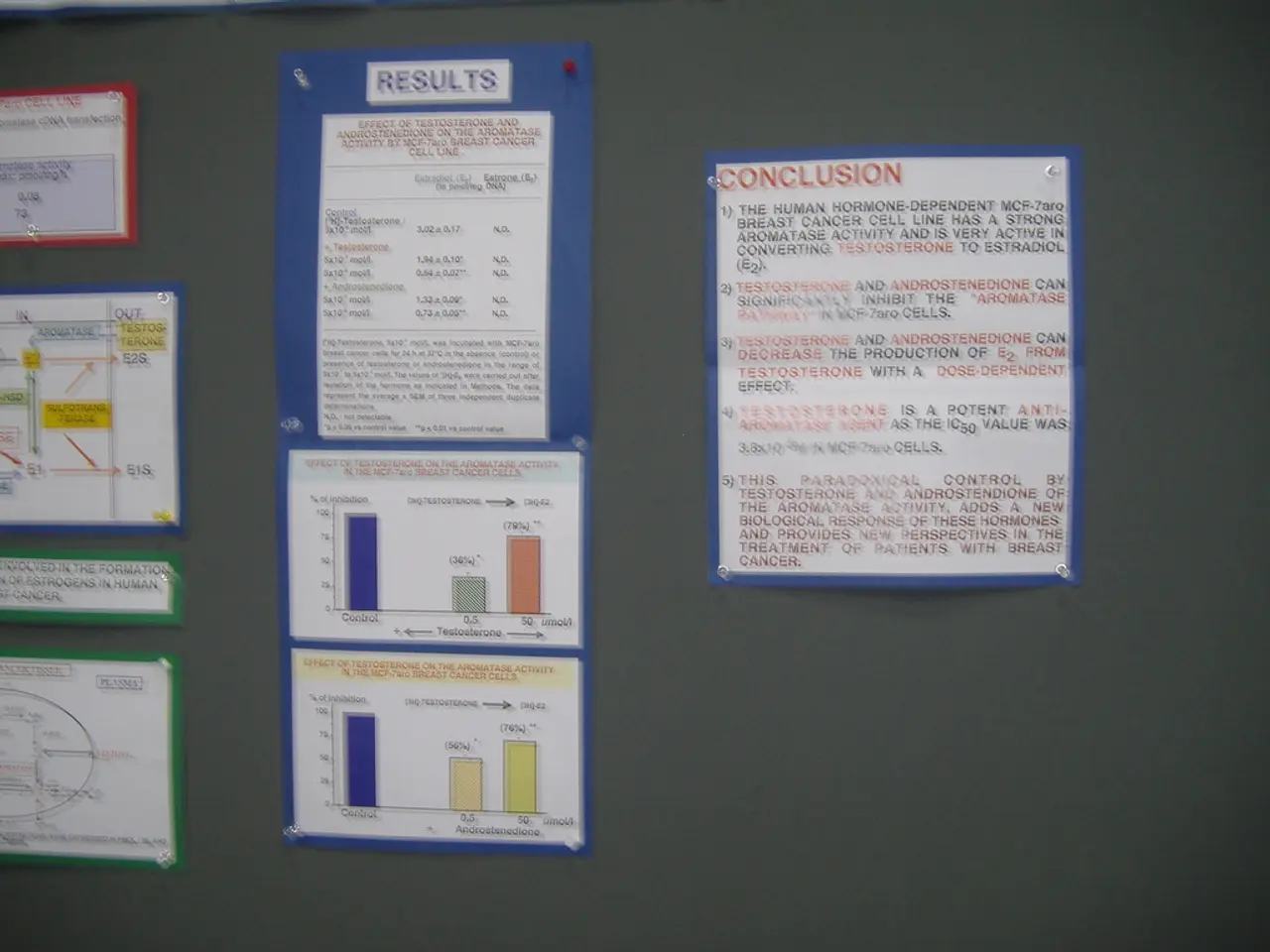Central Bank maintains interest rate following eight consecutive decreases
The European Central Bank (ECB) has opted to maintain its interest rates at their current levels following its latest meeting, marking a pause in its rate-cutting cycle that has lasted for a year. The main refinancing rate remains at 2.15%, while the deposit facility rate remains at 2%[1][3][4].
This decision comes in response to several key factors:
- Inflation Outlook: Inflation in the eurozone reached the ECB's target of 2% in June but is projected to fall below this level later this year and stay subdued for approximately 18 months. This is due to a strong euro, declining energy prices, and cheaper imports from China[1][2].
- Trade Uncertainty: Persistent global trade tensions, such as the potential for new US tariffs on European goods, create uncertainty about future inflation and growth. The ECB is adopting a cautious approach, waiting to assess the impact of these trade risks before making further adjustments to monetary policy[1][2][4].
- Currency Strength: The euro's appreciation, aided by a weakening US dollar, may help to reduce imported inflation, supporting the subdued inflation outlook and the case for holding rates steady[2].
- Policy Approach: The ECB is emphasizing flexibility, avoiding firm forward guidance, and remaining data-dependent in its decisions. Markets are currently pricing in approximately one more rate cut, possibly in September, with a potential shift back to tightening (rate increases) not expected until late 2026[1][2][3].
The ECB's President, Christine Lagarde, has stated that future rate decisions will be based on inflation prospects, associated risks, the dynamics of underlying inflation, and the effectiveness of monetary policy transmission[7].
According to the ECB's June inflation forecast, inflation will be 2% in 2025, 1.5% in 2026, and 2% in 2027[6]. Internal price pressures continue to ease, and wage growth has slowed[1].
Bloomberg's survey suggests that some analysts anticipate the ECB to skip meetings before reaching the lower bound for lending costs[5]. Half of the respondents believe that the ECB may skip three meetings before borrowers consider that lending costs have reached their lower bound[5].
The ECB's July decision matches the expectations of Bloomberg's surveyed analysts[8]. The bank intends to closely monitor incoming data and developments before making further moves on interest rates[1][2][3].
[1] - Bloomberg (2023). ECB Keeps Rates Unchanged as Inflation Outlook Dampens. [online] Available at: https://www.bloomberg.com/news/articles/2023-07-22/ecb-keeps-rates-unchanged-as-inflation-outlook-dampens
[2] - Financial Times (2023). ECB Pauses Rate Cuts as Inflation Slows. [online] Available at: https://www.ft.com/content/6f124b2a-b979-45ad-a928-5f3654020467
[3] - Reuters (2023). ECB Holds Rates Steady as Inflation Slows. [online] Available at: https://www.reuters.com/article/us-ecb-meeting/ecb-holds-rates-steady-as-inflation-slows-idUSKCN24G1J4
[4] - The Wall Street Journal (2023). ECB Holds Rates as Trade Uncertainty Clouds Outlook. [online] Available at: https://www.wsj.com/articles/ecb-holds-rates-as-trade-uncertainty-clouds-outlook-11658691600
[5] - Bloomberg (2023). Half of Analysts See ECB Skipping Three Meetings Before Lowering Rates. [online] Available at: https://www.bloomberg.com/news/articles/2023-07-15/half-of-analysts-see-ecb-skipping-three-meetings-before-lowering-rates
[6] - European Central Bank (2023). June 2023 ECB Inflation Forecast. [online] Available at: https://www.ecb.europa.eu/pub/pdf/scpwopdf/ecb.wp2023_073.en.pdf
[7] - European Central Bank (2023). Christine Lagarde Speech. [online] Available at: https://www.ecb.europa.eu/press/key/date/2023/html/ecb.sp230720_1.en.html
[8] - Bloomberg (2023). ECB's July Decision Matches Analysts' Expectations. [online] Available at: https://www.bloomberg.com/news/articles/2023-07-22/ecb-s-july-decision-matches-analysts-expectations-survey-shows
- The European Central Bank's (ECB) decision to keep interest rates steady is a reflection of the current state of the business sector, as the bank carefully considers factors such as inflation outlook, trade uncertainty, currency strength, and policy approach.
- Moving forward, the ECB's future finance decisions will be centered on inflation prospects, associated risks, the dynamics of underlying inflation, and the effectiveness of monetary policy transmission, as indicated by President Christine Lagarde.




